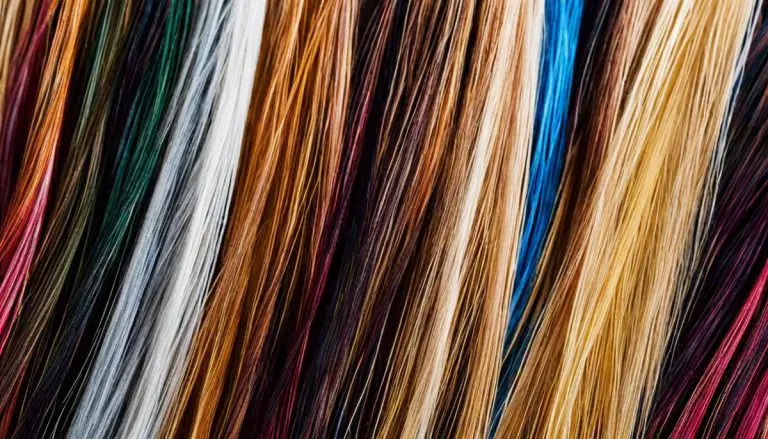The fascinating world of human hair color displays a wide spectrum of shades, from jet black to platinum blonde. It’s a complex characteristic results primarily from the interplay of genetics, melanin distribution, and environmental factors. This intermingling of elements creates our everyday hair colors, but also, it manifests in forms that are considered rare and unconventional. From the ebony shades of true black hair to the fiery hue of natural redheads, or the ethereal glow of white blonde hair – these are colors that only a small percentage of the world’s population can boast of naturally. The ensuing sections provide a deeper understanding of hair pigmentation, the fascinating phenomenon of rare hair colors, how specific genetic conditions like albinism affect hair color, and the broader societal and cultural implications these rare hair colors possess.
Understanding Hair Pigmentation
Understanding Hair Pigmentation: A Genetic and Chemical Perspective
The determination of human hair color depends largely on genetic factors and the presence and concentration of specific pigments known as melanin. Melanin is synthesized by specialized cells called melanocytes and stored within hair follicles. Eumelanin and pheomelanin are the primary types of melanin that dictate the color and tonality of hair. Eumelanin manifests in two forms: black eumelanin, which gives hair a dark black or brown color, and brown eumelanin, which results in lighter brown tones. Conversely, pheomelanin is responsible for creating red and yellow hues in hair.
Uncovering the Melanin Mechanism Behind Unusual Hair Colors
When it comes to the kaleidoscope of hair colors seen around the world, it all boils down to melanin, specifically the amount, distribution, and ratio of different types of melanin. Uncommon hair hues like red or blonde are attributed to distinct levels and interactions of these melanin types. For instance, red hair comes from an abundance of pheomelanin coupled with a lesser presence of eumelanin. In comparison, blonde hair signifies a lower level of both eumelanin and pheomelanin. Changes in certain genes, such as MC1R, can affect these melanin levels and lead to rare hair colors. Studying these pigmentation processes is scientifically interesting, as it not only unwraps the mystery behind the plethora of hair colors, but also sheds light on the genetics contributing to such incredible biological diversity.

An Overview of Rare Hair Colors
Exploring True Black: The Rarest of Hair Colors
Believe it or not, the rarest natural hair color worldwide is true black, standing out starkly against its more prevalent and often misidentified kin, dark brown hair. While true black hair is more typically seen in certain Asian countries such as Japan, China, and Korea, it accounts for a mere 1% of the global population. This dark hue is especially rare outside of these areas due to its unique genetics. The intense concentration and high levels of the eumelanin pigment in true black hair is a genetic trait that provides a natural sun shield, especially useful in regions around the Equator where UV radiation is most potent.
Uncommon Shades of Blondes and Reds
Blonde and red hair colors are quite rare in the global population, only accounting for 1-2% of the world’s demographic. Most people with natural red hair draw their heritage back to Celtic and Irish bloodlines. Strawberry blonde, an uncommon blend of light red and blonde, is even rarer to see. Additionally, natural white blonde hair, mainly found among small children of European descent specifically the Scandinavians, is another uncommon sight. In most cases, this color deepens with age, making its appearance in adults even more unusual. A significant factor influencing the presence of such exceptional hair colors is the MC1R gene mutation, along with other genetic factors.

Photo by paul_siewert on Unsplash
Albinism and Hair Color
The Impact of Albinism on Hair Color
Albinism is a condition inherited genetically, notable for its significant reduction or even total lack of pigment in the skin, hair, and eyes. This scarcity greatly affects the production of melanin, the pigment accountable for coloring in humans. Due to the absence of melanin, the hair color in albino people can present as an ultra light blonde, silver, or even white. However, the color can differ from one person to the next, depending on the intensity and type of albinism. Even within these extremes light shades, faint hints of yellow or red may appear. These are due to the presence of a different type of melanin, known as pheomelanin.
The Role of Genetics in Albinism
Albinism is a unique condition influenced by genetics and is often seen to run in families. The condition is passed down via recessive genes; both parents need to carry the gene for a child to be affected. These genetic anomalies lead to either a reduction or a complete lack of melanin, the pigment responsible for color in our skin, hair, and eyes. In the United States, roughly one out of 20,000 people are affected by some form of albinism. It’s not just the distinctive hair and skin color that set these individuals apart, but the associated challenges such as vision impairment, a heightened susceptibility to sunburn and skin cancers due to the lack of melanin protection. Social stigmas and cultural misconceptions may also present hurdles for individuals with albinism.

The Impact of Rare Hair Colors
Societal Perceptions of Distinct Hair Colors
Unusual hair colors, including red, blonde, and unconventional hues like blue or purple, have garnered intrigue and fascination across historical periods and diverse cultures. Historically, redheads were at times misconstrued as witches during the Middle Ages, leading to discrimination and fear. Conversely, blonde hair has been viewed with admiration in numerous Western societies, often associated with qualities such as youth, beauty, and innocence. An example of extreme hair color is seen in tribes that use natural elements such as berries or plants to dye their hair blue or purple as part of rituals or to intimidate adversaries. Yet, these vibrant hair colors are often considered rebellious or unconventional in today’s societies, painting a unique picture of how hair colors intertwine with societal perceptions.
Implications in Contemporary Society
The societal attitude towards rare hair colors has evolved over time and continues to impact people in the present day. Studies reveal that stereotypes linked to hair color still exist. For instance, redheads are often portrayed as feisty or temperamental, while blondes are frequently stereotyped as less intelligent. On the other hand, unusual hair colors such as pink or blue are often correlated with expressions of individuality or nonconformity. These preconceived notions can lead to subtle biases, favoritism, or discrimination in areas like employment, social interactions, or media portrayal. However, the increasing acceptance of diversity and self-expression in many contemporary societies is challenging these stereotypes and slowly shifting perceptions about rare hair colors.

Through the lens of science, society, and personal lived experiences, we have explored the unique prism of rare hair colors. A person’s hair color, be it uncommon or otherwise, tells an evolutionary story not just of human biology and genetics, but also of identity and perception shaped by societal norms, cultural beliefs, and historical contexts. As we’ve learnt, even within the seemingly narrow scope of rare hair colors, there lies scope for celebrations, challenges, stigma, or bias. Understanding these strands of humanity ultimately paints a diverse and intricate picture of the human condition, allowing us to appreciate the beauty that lies in difference and the richness it adds to our collective tapestry.



